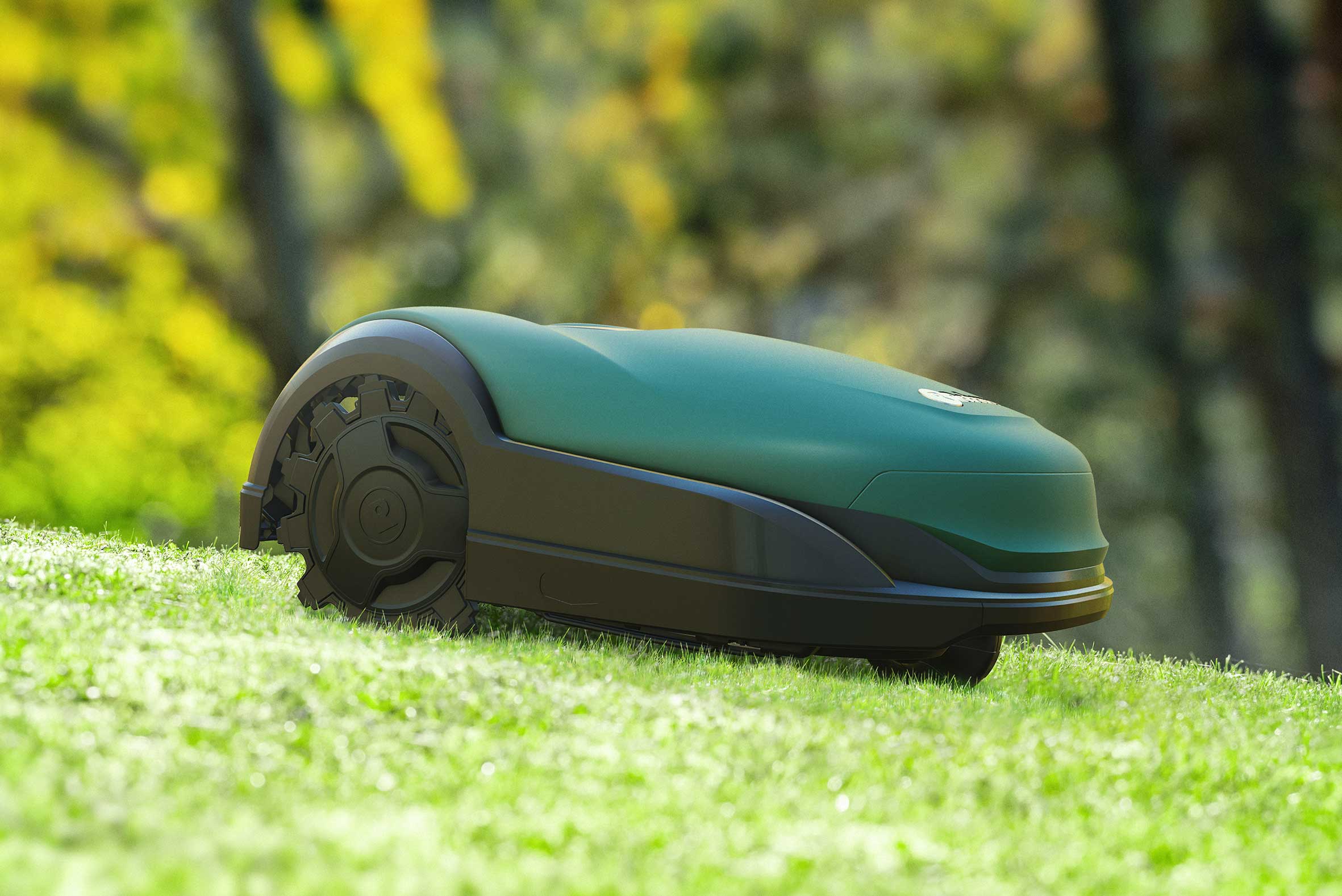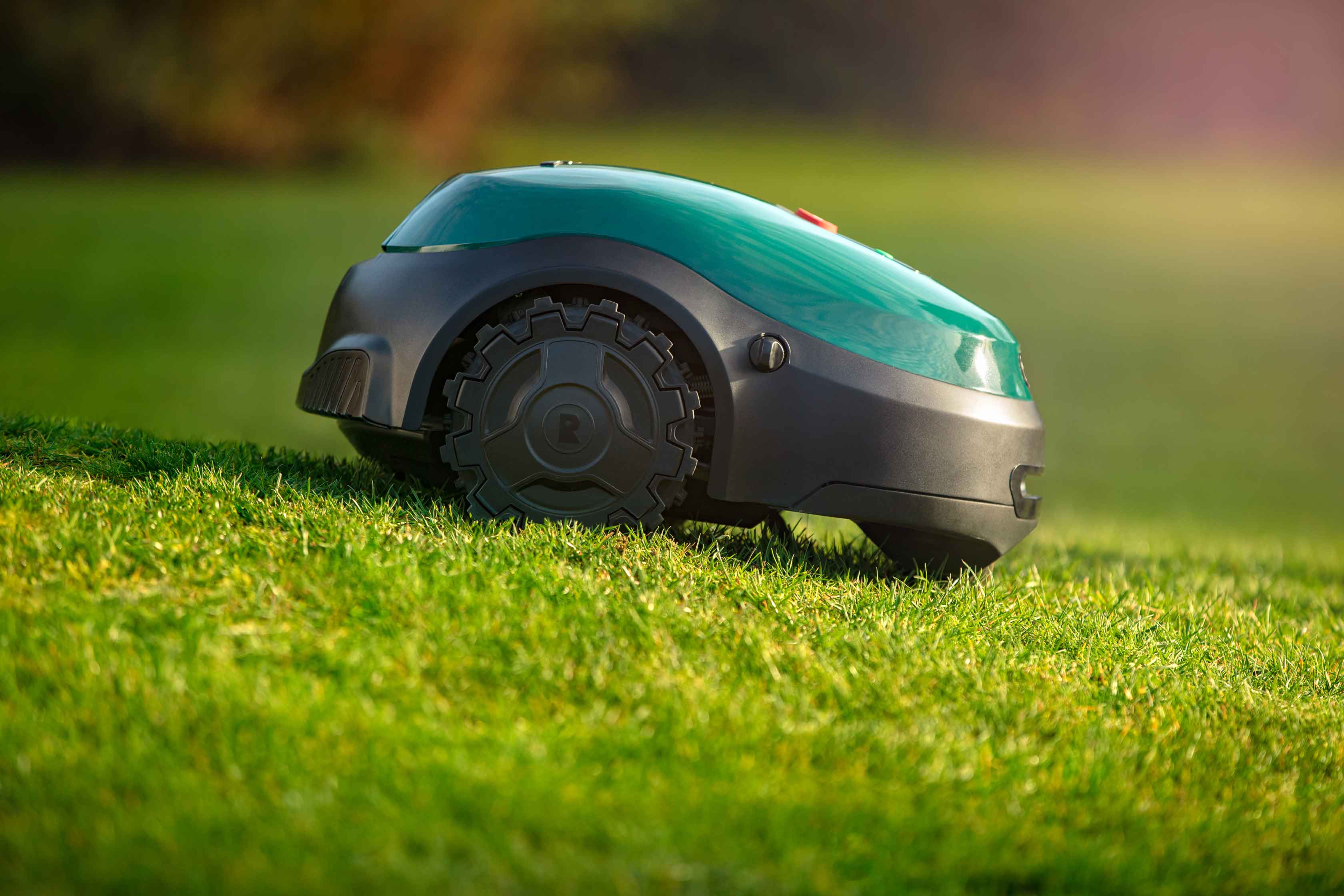Robotic mowers with rain sensors
26.04.2023
Rain sensors detect precipitation and tell the robotic lawnmower to interrupt its mowing process and head back to its charging station. The device then remains there until the rain subsides before resuming its work. If it is raining when the robotic lawnmower is supposed to start its work, it will simply stay at the charging station until the rain subsides. That sounds extremely practical at first.
THE RAIN SENSOR PRIMARILY HELPS PROTECT THE LAWN
One might assume that the purpose of a rain sensor is to protect the robotic lawnmower from rain. However, this is largely a fallacy, because the housing of a robotic lawnmower is usually quite designed to withstand any harm. Modern devices are so firm to the ground that even when passing over puddles, they generally cannot be damaged.
Rain sensors on robotic lawnmowers primarily serve to protect your lawn. Older robotic mowers with outdated technology can weigh 30 kilograms or more. This may place a considerable strain on the lawn, which is particularly noticeable in wet conditions. If the ground softens, the risk of ruts ruining the lawn is high.
Moreover, another problem some models may have trouble with is mowing wet grass evenly. If they continue their work in the rain, an uneven cut pattern may be seen afterwards. This can result in unsightly damage to the turf, especially on slopes.
This is particularly the case if the wheels do not have sufficient grip and slip around on the ground. Turning maneuvers can also unnecessarily stress the turf when the tires spin.
Overall, manufacturers suggest that a lawn only be mowed under optimal conditions. That is why robotic lawnmower with rain sensors can achieve outstanding cutting results.

MODERN ROBOTIC MOWERS DO NOT NEED A RAIN SENSOR
Obviously, the weight of current robotic mowers also increases with their size. However, the Li-ion batteries installed nowadays are generally lighter than older batteries, which is why the motor for the drive can also be smaller. Overall, the weight is usually reduced to mostly less than 15 kilograms. This helps reduce the aforementioned problems, which occur due to the mass of the device.
An advantage of a robotic lawnmower without a rain sensor is the lower area output that the model must perform in an allotted time. Finally, you do not need to consider forced breaks due to bad weather, because the device simply continues to mow in most weather conditions.
ROBOTIC MOWERS SHOULD EVEN MOW IN THE RAIN
Rain is something we all deal with, even for several days at a stretch. If equipped with a rain sensor, the robotic mower would stay at its charging station for days on end. However, this contradicts the basic mode of operation of the device.
A robotic lawnmower is intended to mow the lawn several times a week so that a very short cut is maintained. The clippings are deposited on the lawn, where they decompose and become a natural fertilizer for the soil.
If this process does not occur for several days due to bad weather, the grass will grow back excessively, especially if it rains. The next time the lawn is cut, grass clippings will be much longer and may not decompose quickly enough, causing the lawn to become matted.
This can also become an aesthetic problem if the robotic lawnmower interrupts its work and only cuts half the lawn.
Moreover, the lawn could suffer from a lack of aeration: the one-third rule applies to lawn plants, as over pruning can weaken them and make them more susceptible to disease. This can also have a negative effect on the appearance of the cut.
If the lawn has grown too long and exceeds the maximum cutting height of the robot, the only solution is to use a conventional lawn mower.
REASONS AGAINST USING THE ROBOTIC LAWNMOWER IN THE RAIN
Indeed, a brief downpour can be a reason to interrupt the work of the robotic lawnmower for a short time. Thanks to modern control options via app, this can be done quite comfortably even from your sofa. This is particularly useful if there are a lot of passages in the garden that require frequent turning maneuvers. This could result in the lawn being chewed up by the constant load of the wheels.
Noise levels may also increase with some models, so mowing in the rain may also contribute to this.
Robotic mowers that do not have special all-terrain wheels could have slippage problems on larger slopes or leaves. However, less problems should arise with chunky off-road wheels.
Finally, it depends on one's own convenience whether the robotic lawnmower should operate in the rain or not. Wet grass tends to stick more to the wheels and mowing deck, so the cleaning effort will increase. If you don't mind this or go straight for a model with an automatic mulch remover or self-cleaning tires, you can confidently send your robot to work in the rain. If these practical features are not available, cleaning directly after use is recommended to avoid grass residues from sticking.
To prevent manually intervening with mowing times, a robotic lawnmower with a rain sensor is a good idea. Furthermore, the sensitivity can be adjusted. This makes it possible to program the device to continue its work in light rain but interrupt its work in a downpour.
PROTECTING THE LAWN WHEN MOWING IN WET CONDITIONS
An effective protection for the soil against mowing in the rain is offered by so-called lawn protection grids. They can protect the soil from washout and damage. There are products that can be applied to the existing lawn as well as those that require replanting the lawn. However, the latter is more useful for heavy equipment. The first variant is usually sufficient for robotic mowers. If necessary, they are helpful on slopes or winding places, which are particularly frequently traveled by the robotic lawnmower.
The optimal equipment of the robotic mower for rain in wet conditions
To help make sure that robotic mowers do not cause damage to the lawn when mowing in the rain, some equipment features are recommended:
- Traction wheels that have a good grip on wet ground and will help avoid slipping
- A mulch remover that automatically cleans the mowing deck
- Self-cleaning wheels, with small brushes that directly remove grass clippings
- If necessary, a higher area output, since mowing wet lawns requires somewhat more power
Can rain sensors be retrofitted to robotic mowers?
In principle, it is possible to retrofit a robotic lawnmower with a rain sensor. However, these are usually rather cumbersome and not very practical. If you are not sure whether there will be problems in your own garden when the robot mows in the rain, you should go straight for a robotic mower with a rain sensor. In most cases, however, this is not necessary.
CONCLUSION
What used to make perfect sense is increasingly losing its validity. As a general rule, many modern robotic mowers no longer require rain sensors. If the devices are equipped with other features such as off-road wheels and a mulch remover, the robot can continue to operate even in the rain. At least, as long as no standing puddles form on the lawn, because when "under water," even some premium models on the market cannot mow. If you don't want to do without a robotic mower with a rain sensor, it's best to choose a device whose sensitivity can be adjusted for maximum flexibility.
Products
Buy a Robomow
Robomow owner
About us
sitemap
Sales & Support
